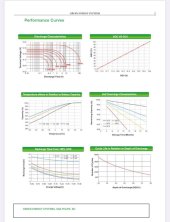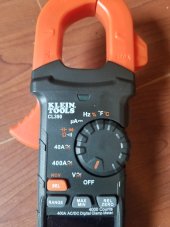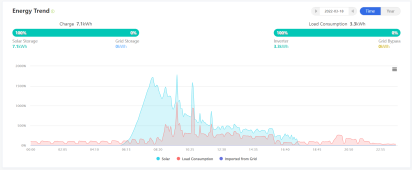Hi,
I'm trying to understand why my off-grid system has not been making it through the night, hoping some of you solar sleuths can help me out. I built this system in the spring and it did well for a while with batteries rarely dropping below 75%, but for the past month or so the inverter has been shutting down due to low voltage early in the morning. If we run the generator in the evening for a couple hours it helps, but even then we drop way down in voltage overnight.
I've contacted the seller of the batteries, and he says we simply need more batteries. I contacted Growatt, and they took a look at my settings and say everything is fine. But what I don't understand is why the power we are using doesn't even come close to the amp-hour rating of the batteries.
We have 4500W of panels, Growatt SPF6000 Inverter/Controller, and eight "lead-carbon" AGM 12V batteries. The batteries are rated at 250Ah (at 77°F). I am running two parallel strings of four batteries, so 48V and 500 Ah. I ran the 240V output from the inverter directly into my electrical panel, and all circuits in the house are brand new and working great.
The controller is set to charge to 56V, and then float at 54V. Looking at my data from yesterday, the battery voltage reached 56V by 10:30am, and stayed there for two hours until 12:30pm, when it dropped to 54V. It stayed right around 54V until around 5pm when the sun gets low in the sky, and from there the voltage starts to drop. I'm assuming that when they go to 54V they are full and under float charge...?
Looking at our power usage, from 5pm until 3:30am when the inverter shut down we are using between 200W and 350W, which is two ceiling fans, the TV for a while, the fridge cycling on and off, some lights, wifi modem, and other small electronics. The battery voltage drops from 54V at 5pm to 52V at 6pm, 51V at 9pm, and then rapidly to 46V at midnight. It continues to fall until 3:30am, when it gets to 42.5V and the inverter shuts down.
Attached are plots of battery voltage and power usage from yesterday and this morning.
Now for my calculations. If I have 500 Ah of capacity at 48V, that is 24,000 Wh. I understand that we don't really want to use more than 50% of the battery capacity, so I should safely have 12,000 Wh to use before the batteries drop to 50%, of course a bit less than that due to inverter efficiency, etc.
So I'm using lets say 350W max for 10.5 hours, which is 3,675 W-hr of energy. So why are my batteries dropping down to under 25% when I'm not using anywhere near the energy I have?? I'm a mechanical engineer, not electrical (haha), but the math is pretty simple, right?
I understand this is not an exact science, and battery capacity can vary with temperature and other factors. My battery room is in the low 80 degrees F for most of this time.
Any thoughts? Am I missing something?








